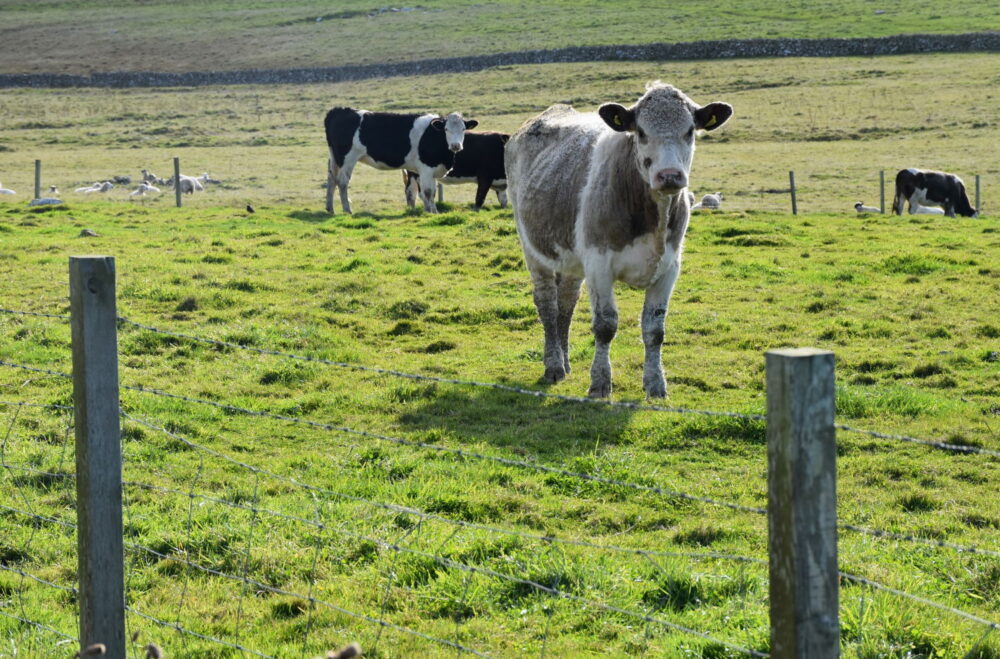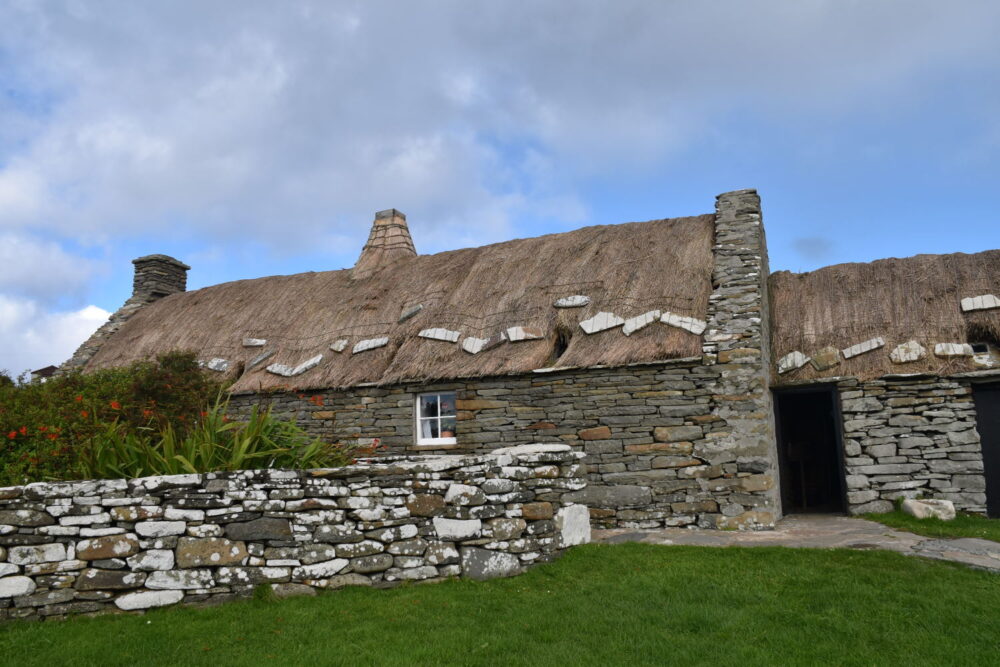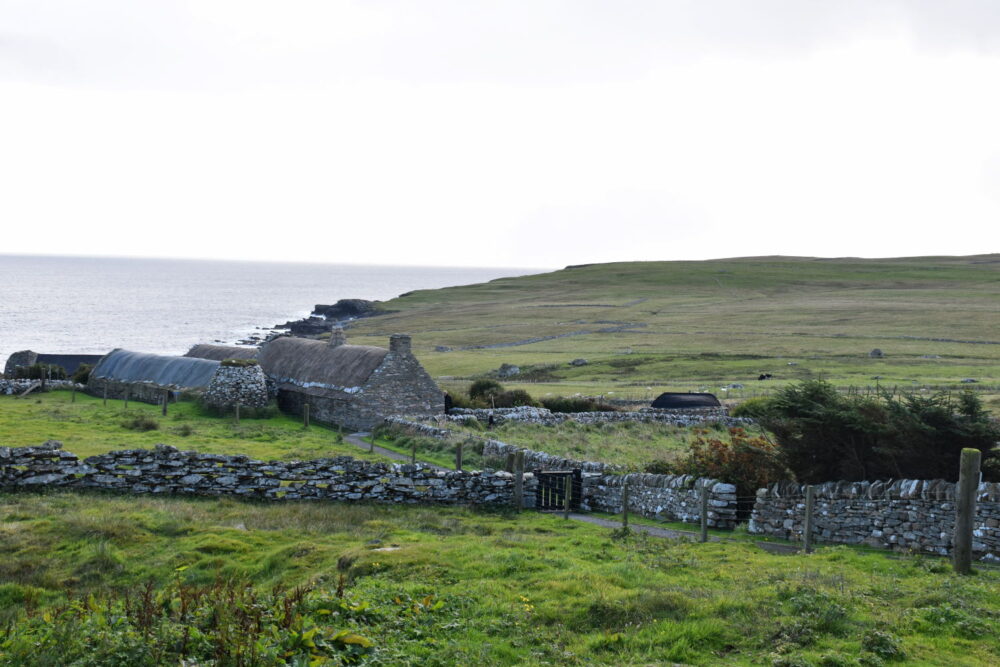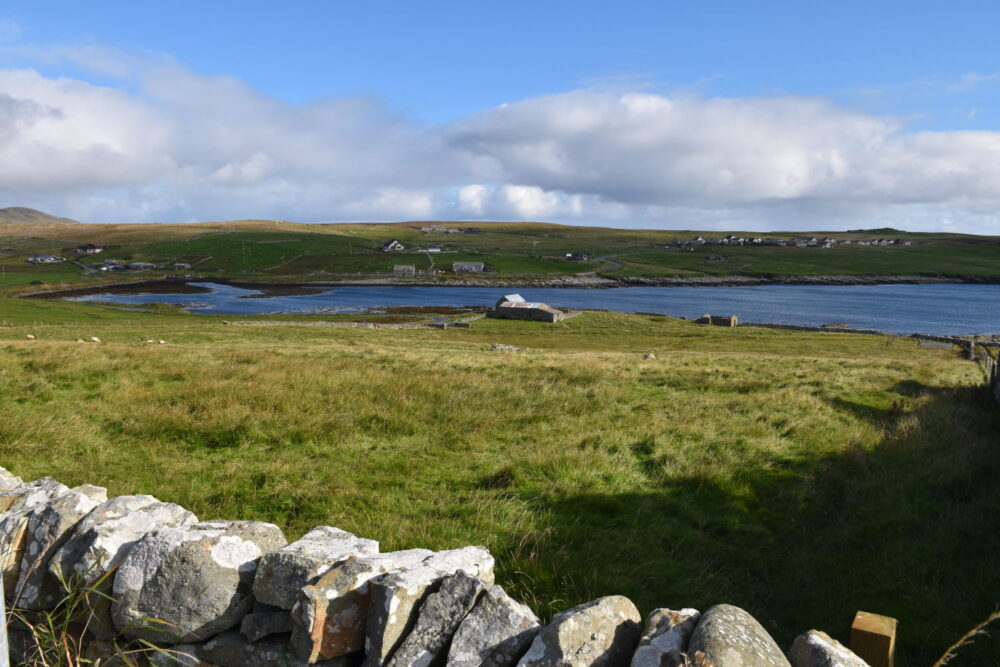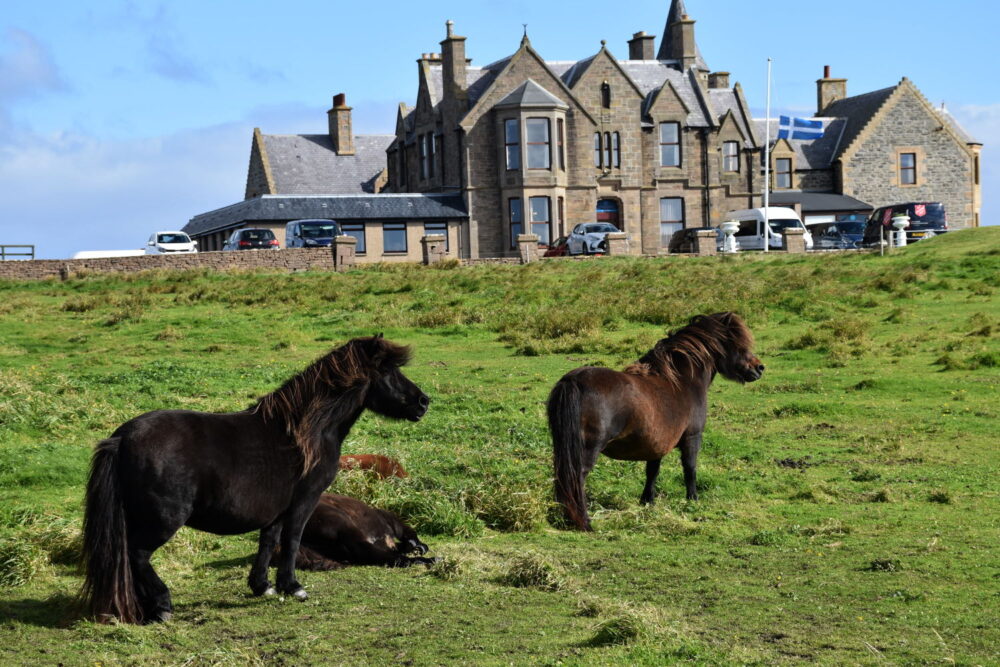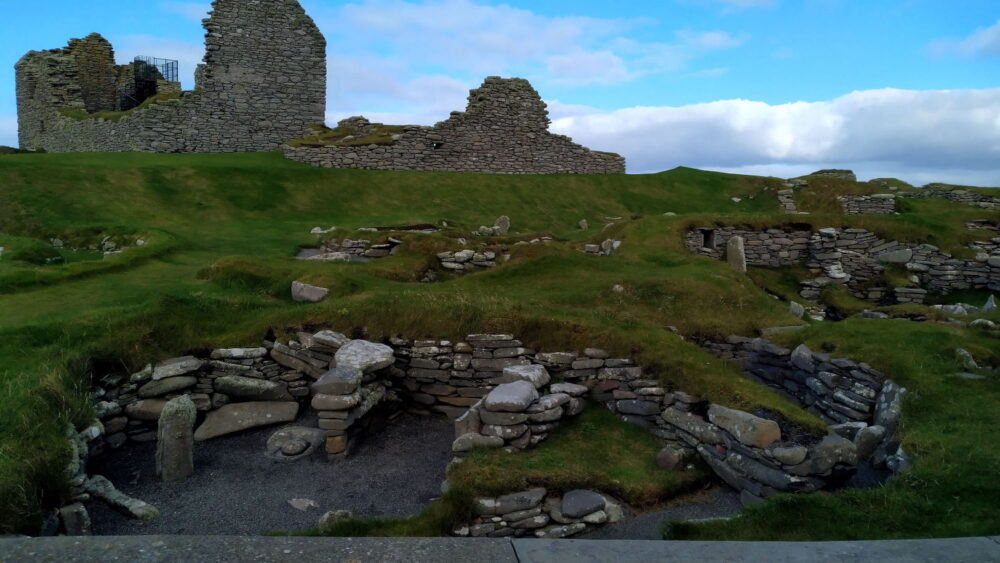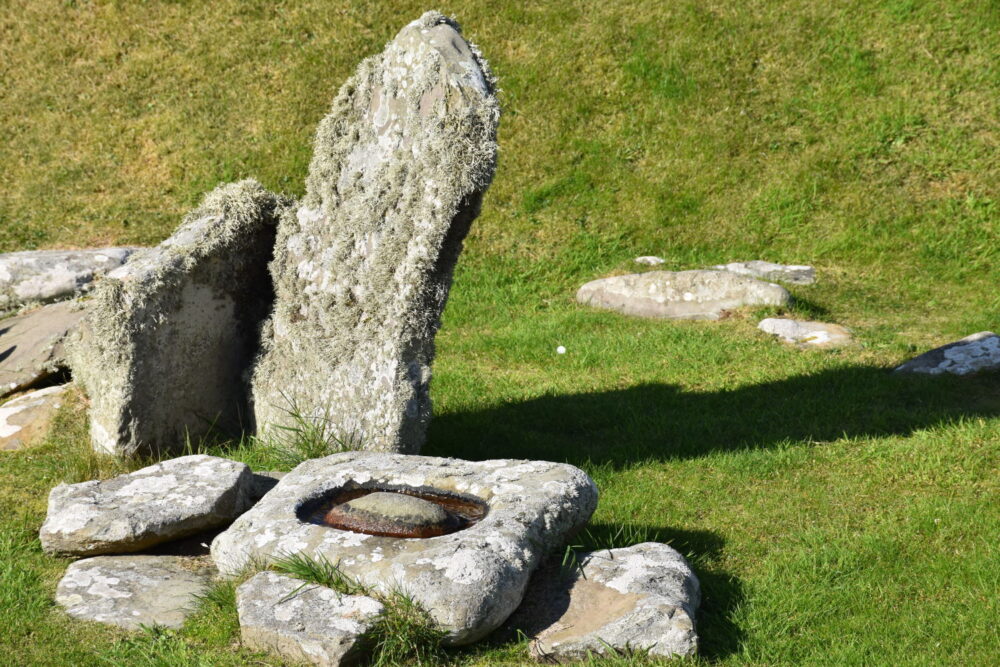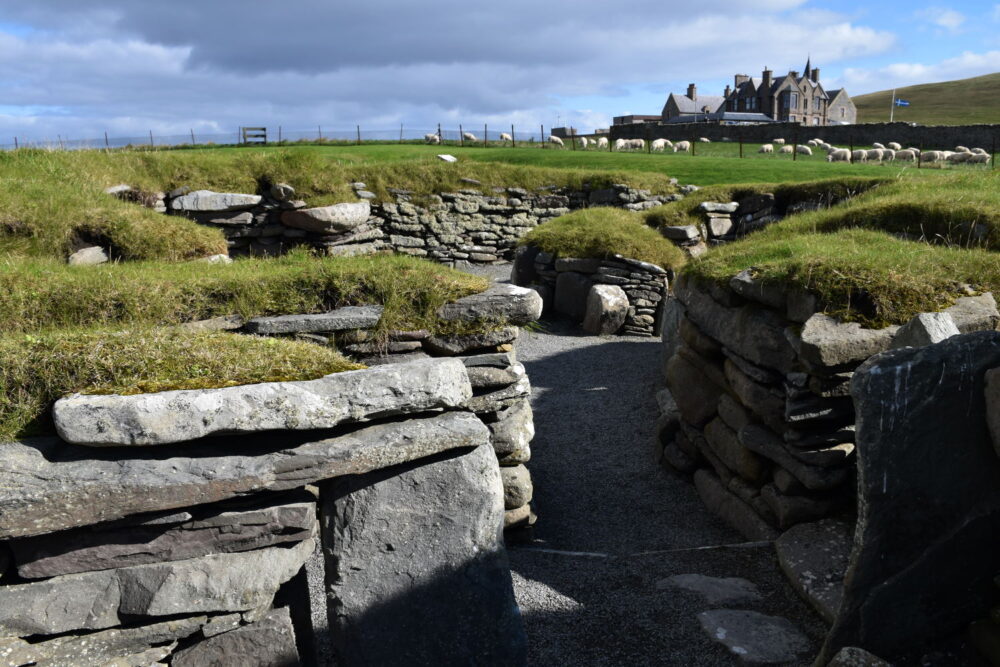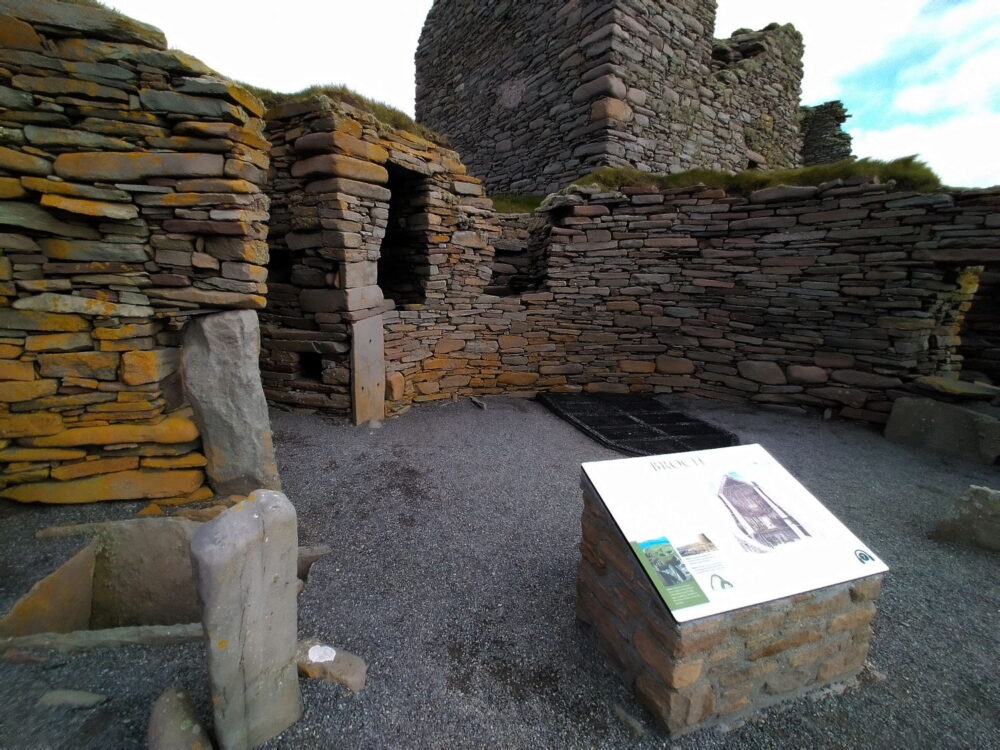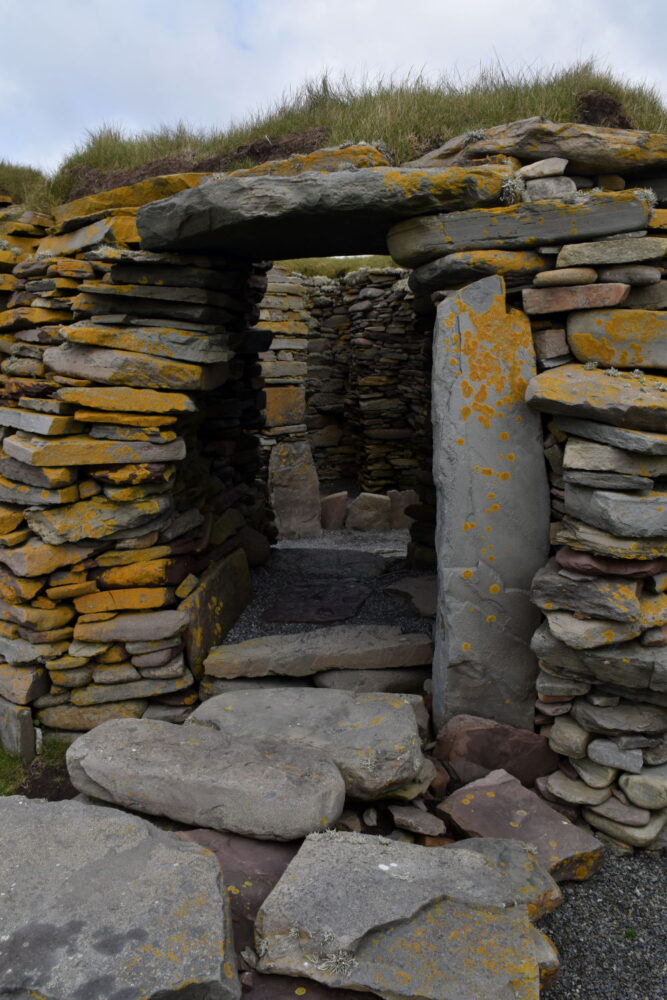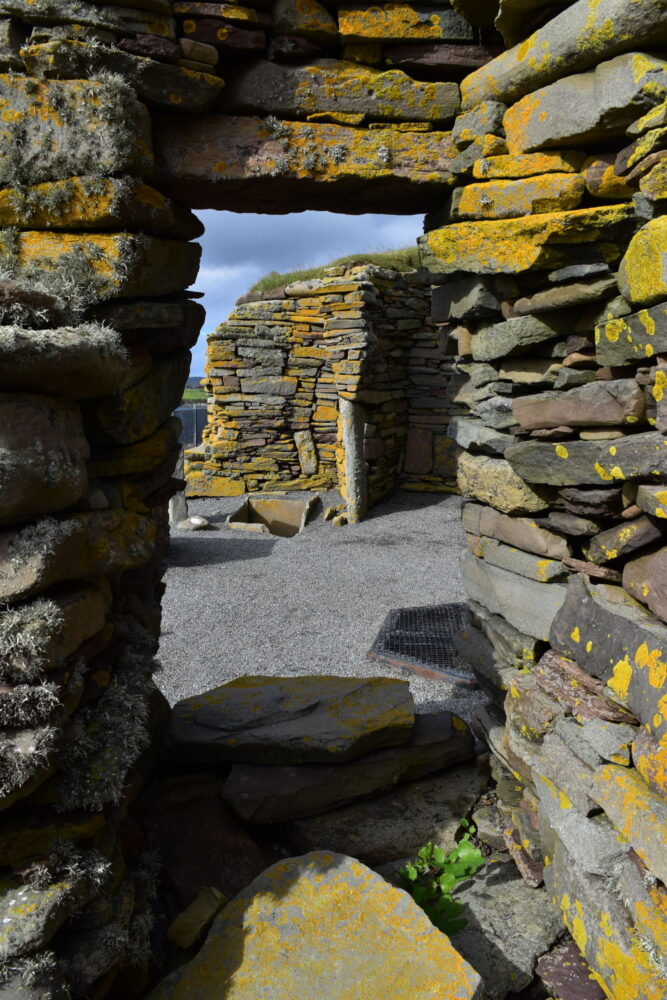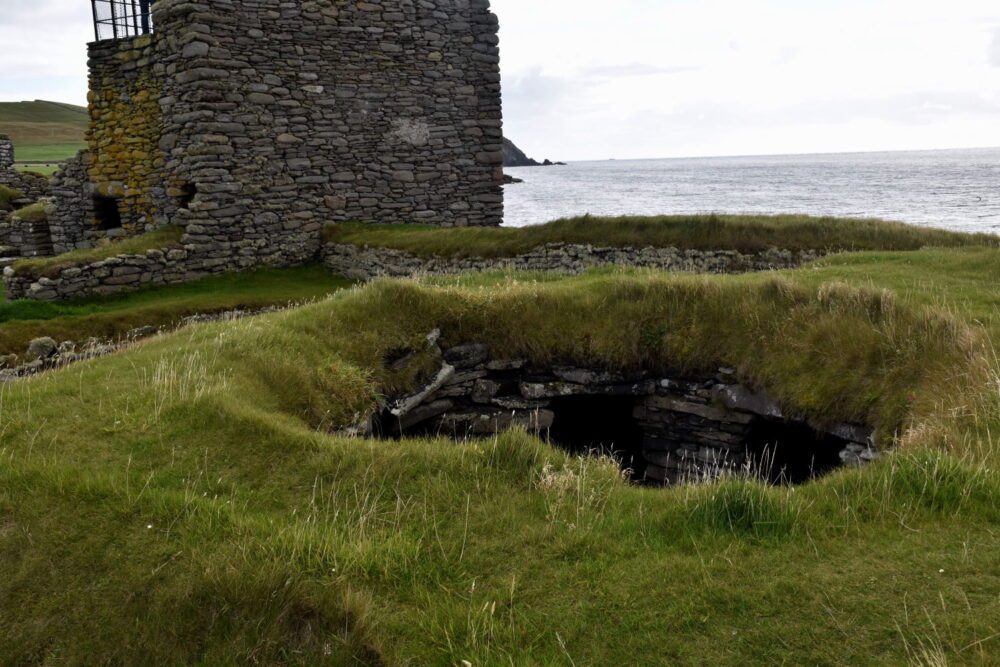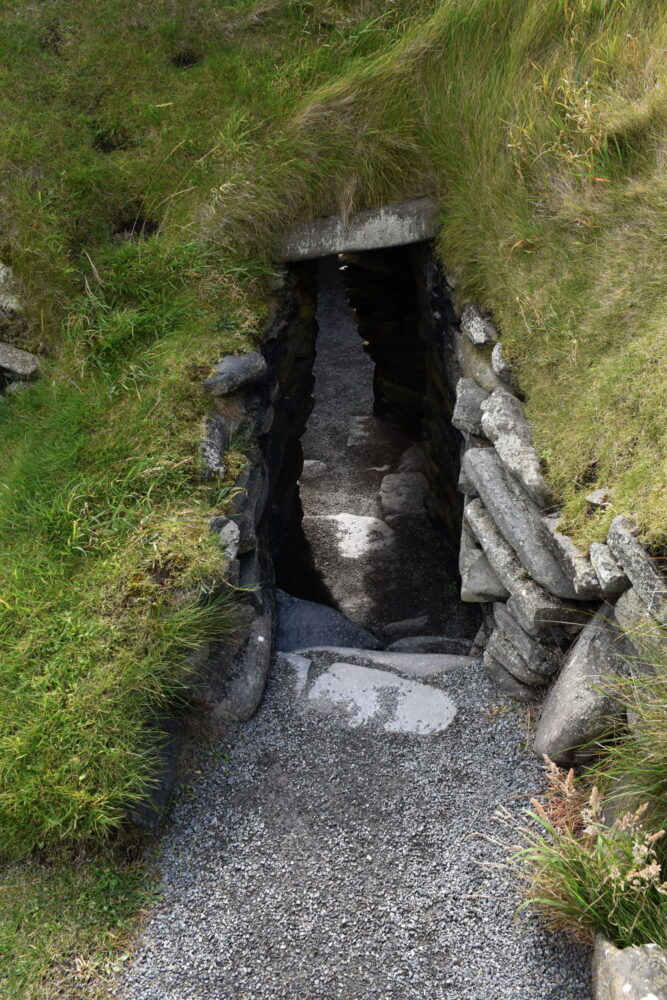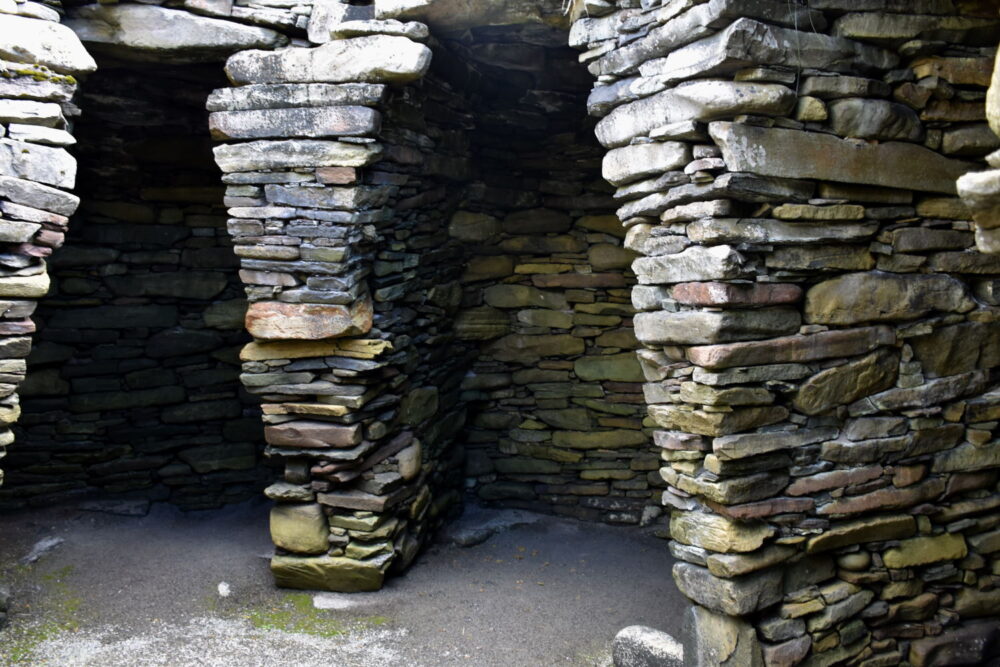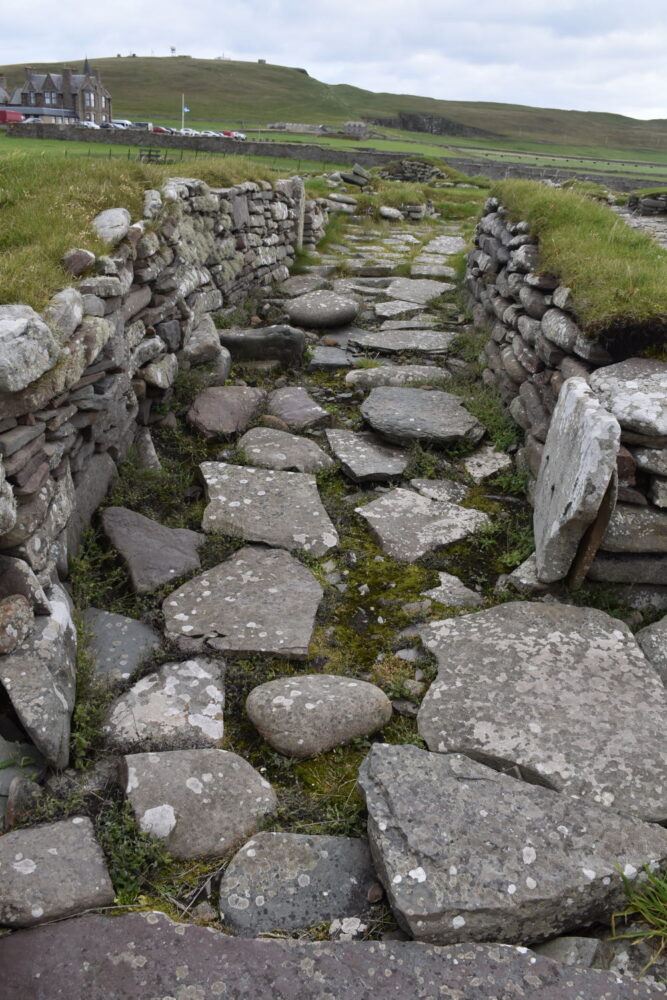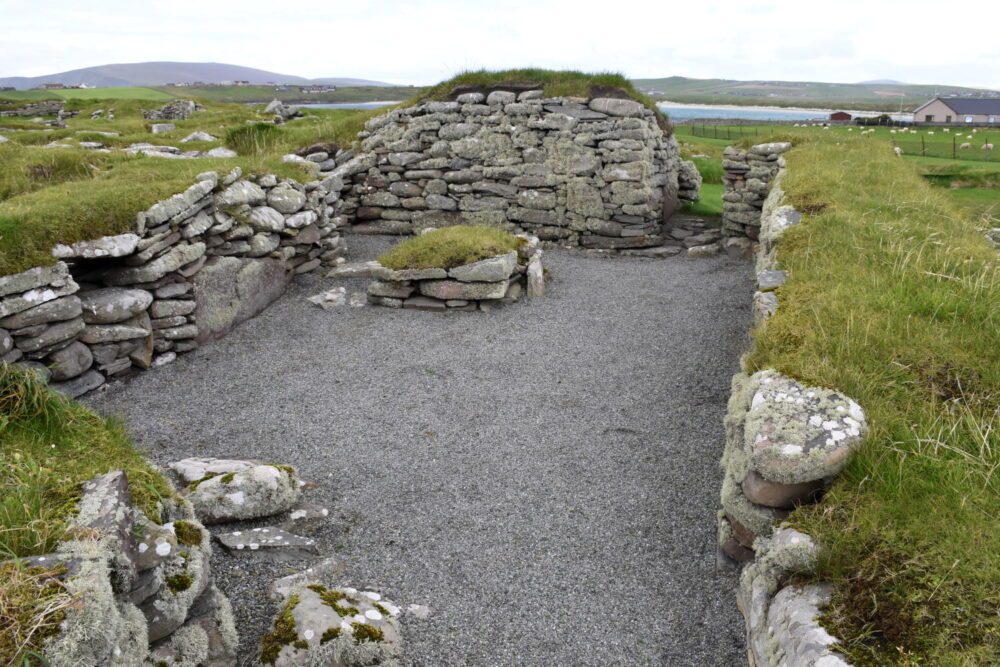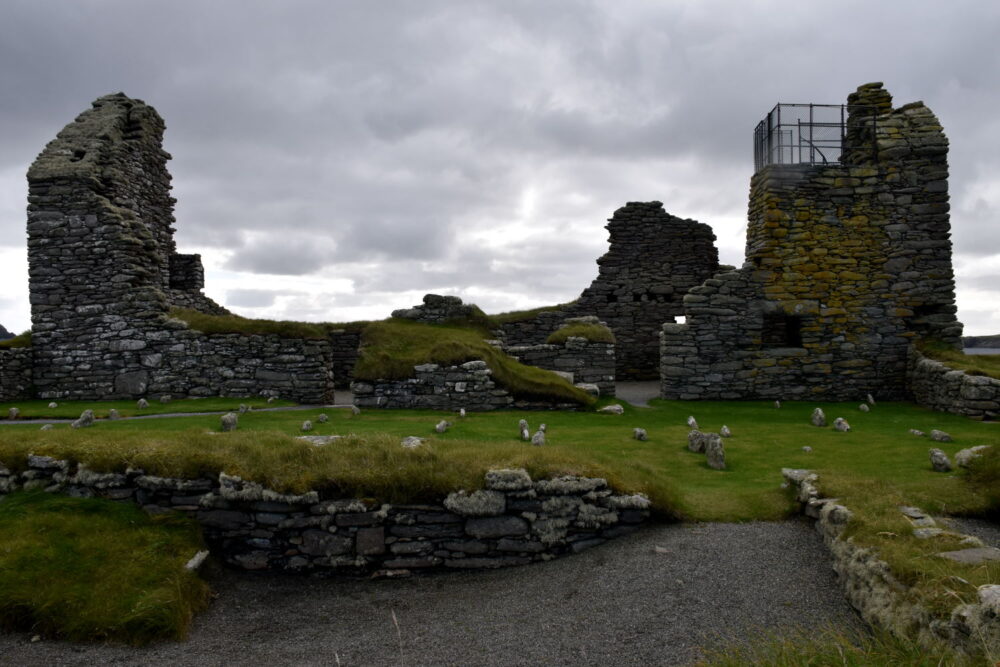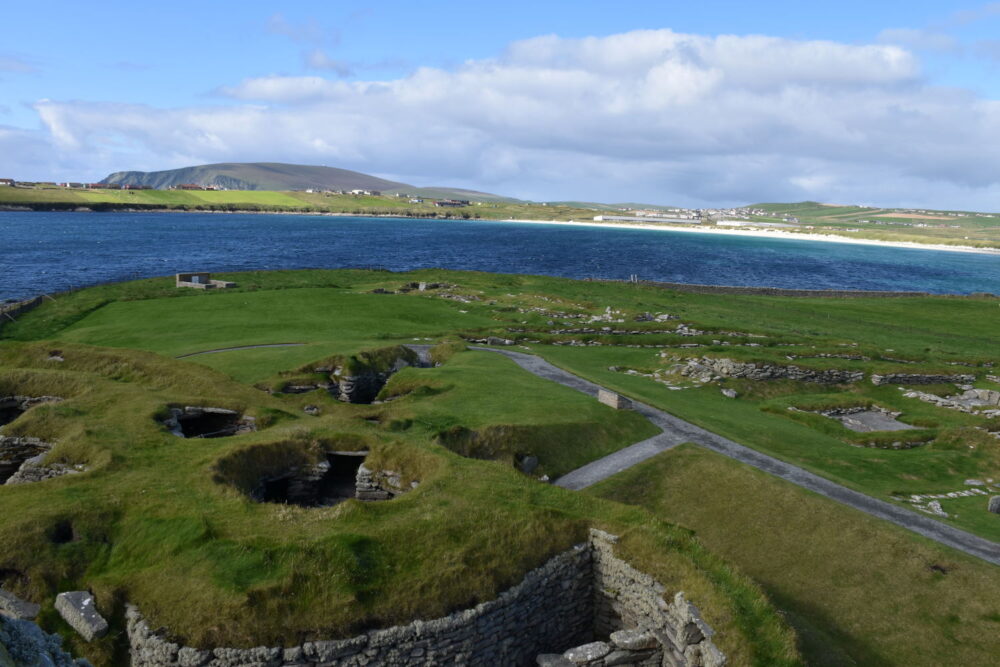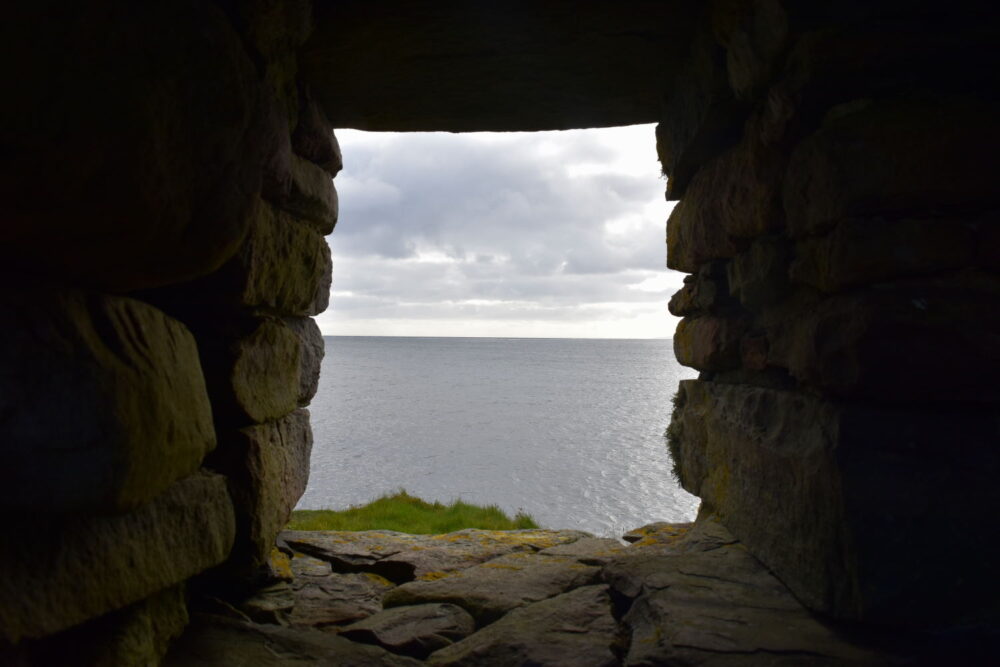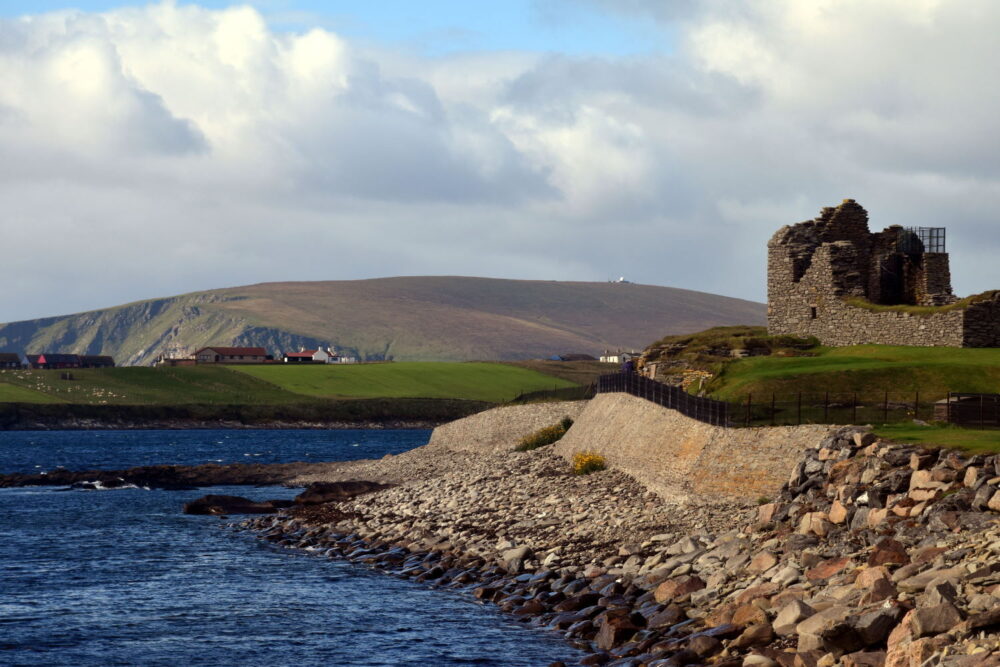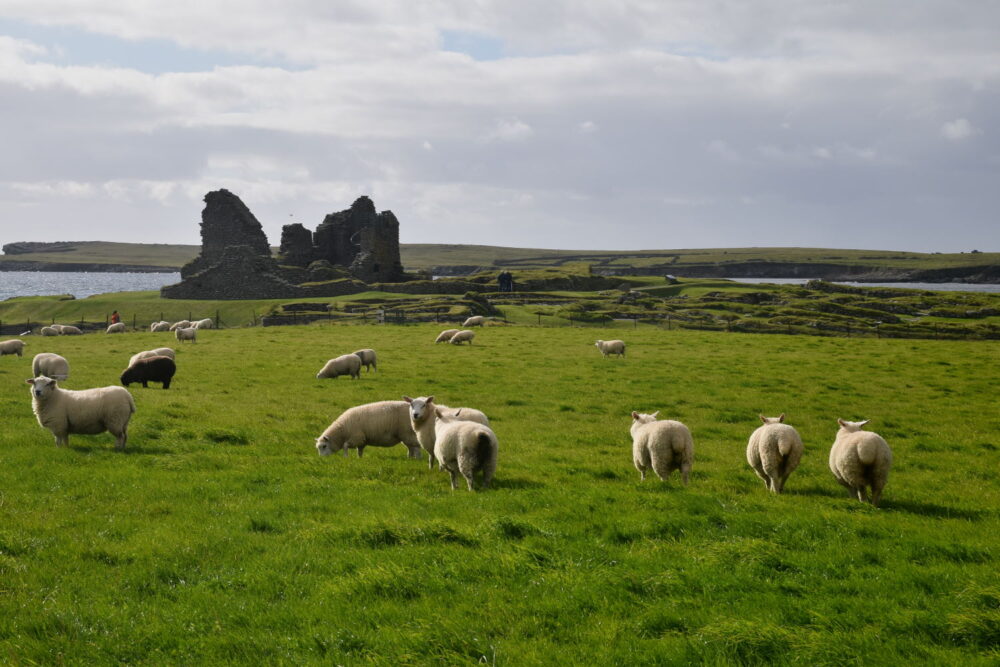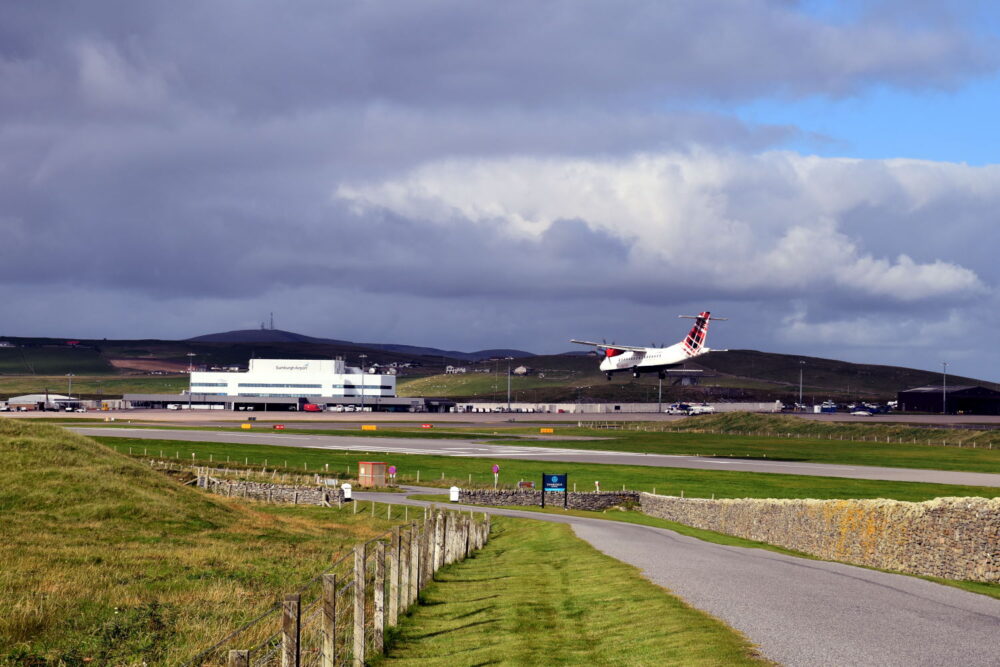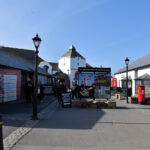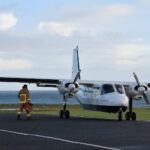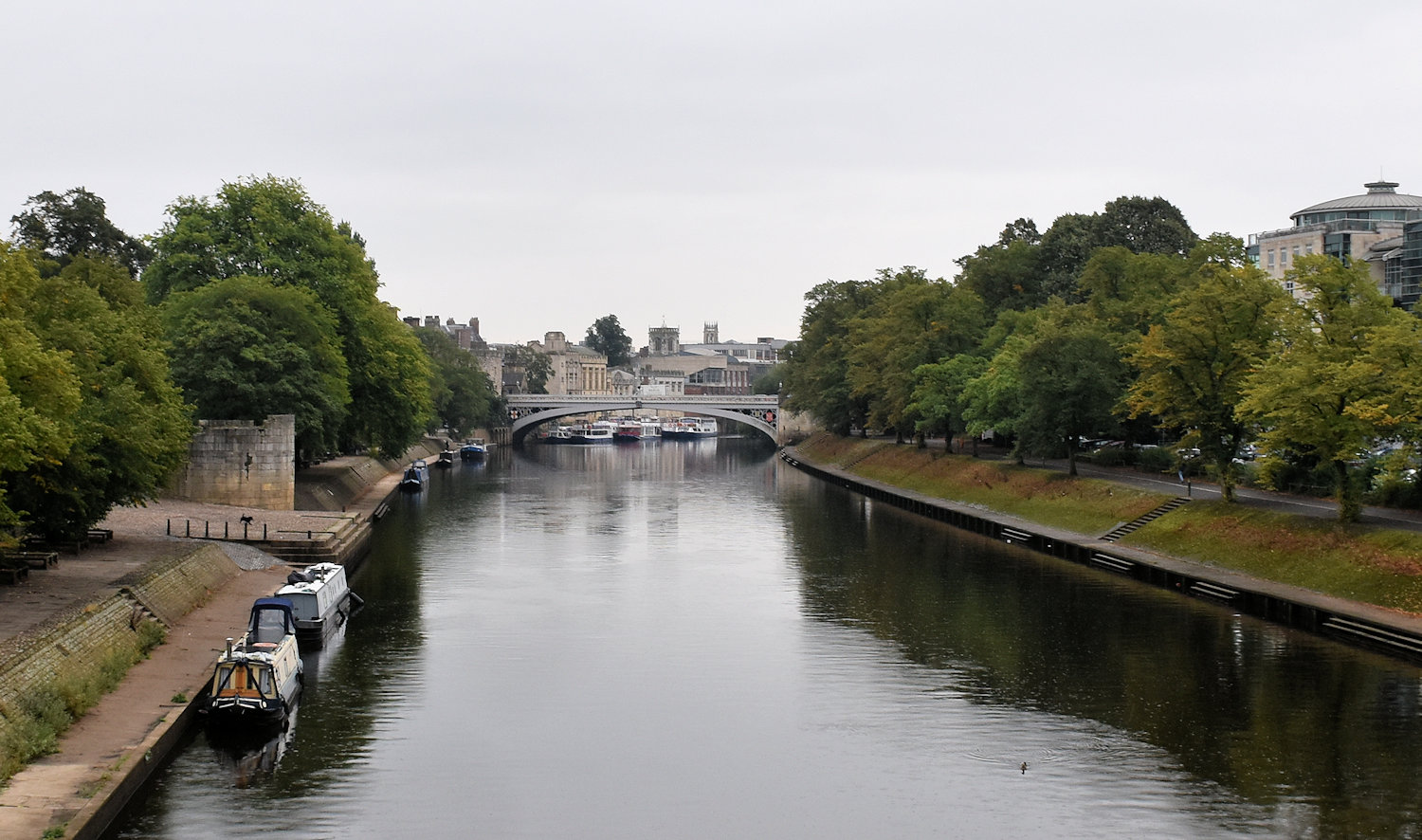Today we’re visiting a place that calls itself one of the most important prehistoric sites in Shetland. Right there, on the first line of the guidebook. But first a little deour.
To look at a croft, a small tenant farm. There are two rooms on the left, and a barn and byre on the right. Grass roof.
It’s a bit smoky. The guide had just lit the peat fire. Some chimneys draw better than others, he said. The bedroom is through the door on the right. All the wood, both structural and furniture, comes from driftwood, both ship remains and logs. The floor here is flagstones and the window relatively big. This make the cottage rather fancy for its type.
The round structure at the back is for drying grain. The was a firebox with a flue that drew heat up through the cavern bit and sped up the drying, and then it was ground up into flour.
Walking back to the bus
Sumburgh airport is on the southern tip of Mainland island’s tail This hotel is across the paddock, and next door Is Jarlshof.
The location “offered excellent harbourage, while the land around the promontory had fertile ground for arable farming and grazing. Nearby springs provided fresh water, while local supplies of flat building stone were abundant and easy to work into dwellings”. (From the Historic Scotland guidebook (they’re the organisation who maintain & manage these place, like the National Trust.)
Over time the earlier settlements were covered up and and the final house was abandoned at the end of the 17th century and fell into ruin. Then in 1890, a storm uncovered some interesting old remains. Over the next few decades, archaeologists starting find all sorts of interesting stuff.
The earliest remains are Neolithich, from abour 2500 BC. (Neo is new, lith is stone, New Stone Age). There’s not much left of these. This was a grinding stone.
Next are remains of Bronze Age houses and a smith.
Now the Iron Age. The extent of the Iron Age varied. Generally, the end of it is marked by people putting things in writing. So for most of Europe that was the arrival of the Romans. 43 AD in southern Britain. Up north, where there wasn’t Roman intrusion, the Iron Age lasted longer. Here it ended about 800 AD with the arrival of the Norse. And while we like to break these things into nice, neat periods, in reality there’s a lot of overlap. The Iron Age Britons (who you probably know of as Celts) lived alongside the Romans, and were there when the Romans left in the 5th century to be replaced by the Anglo-Saxons, except they weren’t. The locals obviously didn’t want foreigners coming in so it took another century or two before the Saxons gained a good foothold and started what used to be called the Dark Ages but definitely wasn’t. (This is going to come up a lot, so you might want to pay attention 🙂 )
Anyway, a broch was a conical stone tower, found throughout Scotland but they’re not sure what they were used for. Probably dwellings, with a bit of defence. Most of this one has been lost to the sea (just behind me is the beach) and weather. So what you’re looking at here is a semi-circular wall of the lower floor.
The wall through the window is the same one on the left of the first broch photo.
After brochs came wheelhouses (centre of photos). A circular structure with rooms radiating out from the centre.
That’s a narrow, steep door in.
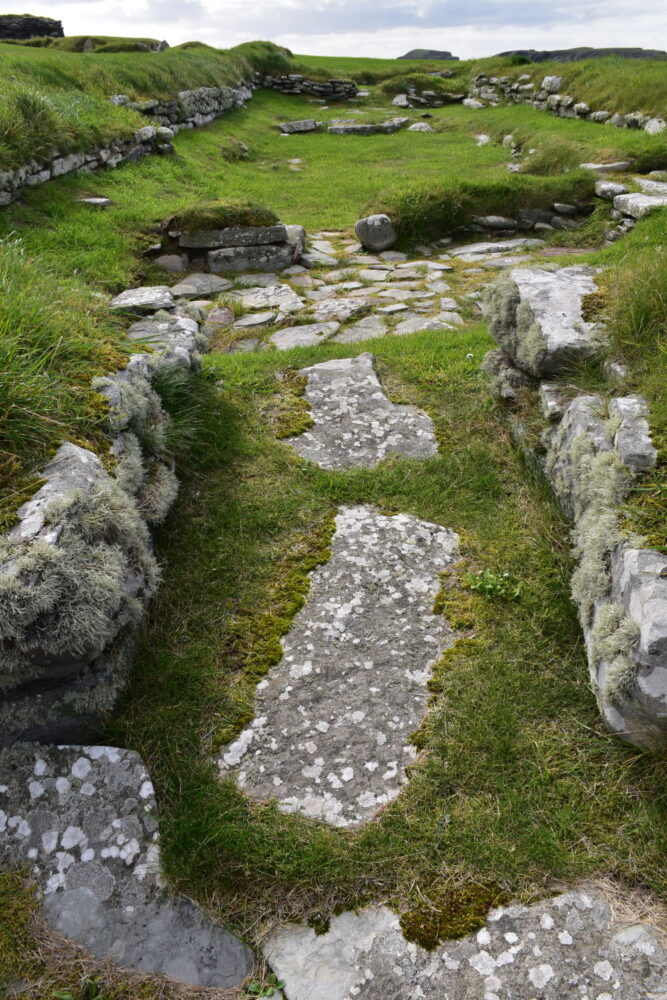
The Norse settlement was established about 800 AD. (That’s concurrent with the Anglo-Saxons down south.) It was more of a large farm than a village.
A Viking longhouse.
And then a Medieval Farmhouse (which was sort of a development from the longhouse).
And finally the laird’s house, built about 1600. The obvious part of it is the hall/main residence. An older hall became a kitchen block (foreground) forming two sides of a courtyard. In the middle are either headstones of shipwrecked sailors or a temporary cemetery from the 1700s, the guidebook says. The metal frame at the top on the right marks the top of the stairs.
It has a good view. Wheelhouse at the front and the Norse farm over to the right.
A couple of views from outside. (The laird’s house is obvious, and the Iron Age broch and associated buildings are to the left of that. You can see how it was lost to the sea.)
As I said earlier, the airport is nearby.
